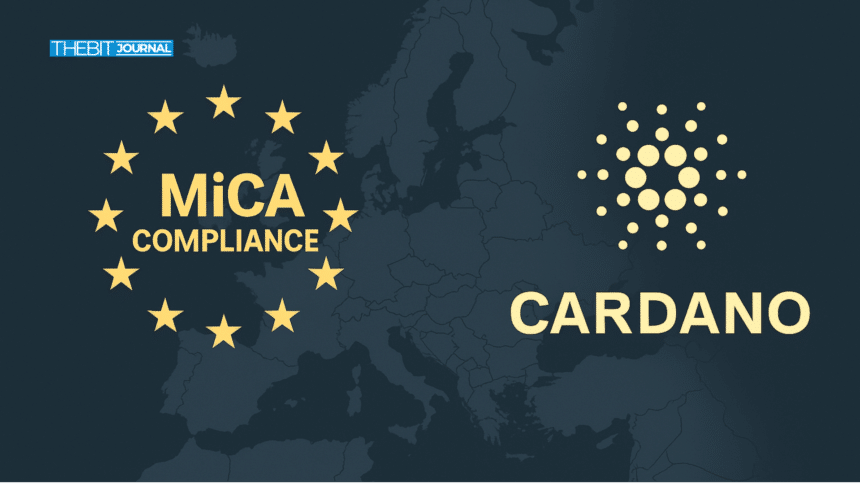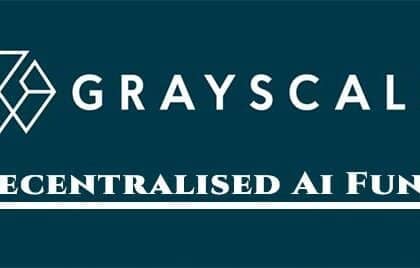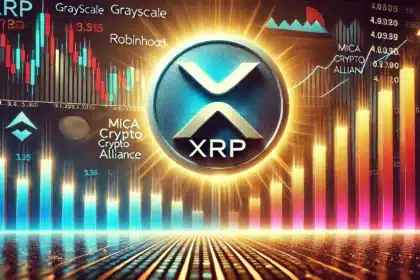After releasing sustainability indicators last year, the Cardano Foundation’s strategic efforts finally paid off. The firm achieved MiCA compliance, paving the way for the token to spread into the European crypto market.
According to a post on social media platform X, the move, which results from the Cardano Foundation’s collaboration with the Crypto Carbon Ratings Institute (CCRI) to develop sustainability indicators for the Cardano network, fully complies with the EU’s Markets in Crypto-Assets (MiCA) regulation. This proactive move will enhance cryptocurrency ADA’s credibility and open new opportunities across regulated markets.

Set the Standard for the Crypto Space
A July 2, 2024 report revealed that the Cardano Foundation had partnered with CCRI to seek MiCA compliance that requires cryptocurrency issuers and service providers to disclose sustainability indicators. The report expounded Cardano’s energy-efficient consensus protocol, which uses less energy than existing proof-of-work consensus mechanisms. The report further detailed the network’s carbon footprint metrics, annual electricity consumption, and marginal power demand per transaction per second. The metrics must satisfy the MiCA compliance details in the draft of the regulatory technical standards from the European Securities and Markets Authority.
Commenting on the filing then, Cardano Foundation CEO Frederik Gregaard stated the firm’s belief in doing everything to gain MiCA compliance and meet the EU regulations, in addition to setting the standard for the crypto space. Gregaard further stated that the firm believed it was vital to build trust with regulators, investors, and users to pave the way for wider adoption of blockchain technology in a sustainable manner.

A Step Towards Crypto Regulation
The European crypto landscape has recently undergone numerous changes, with several MiCA regulations taking effect. The legislation first proposed in 2020 sought to institute a common regulatory framework for the European Union, with the European Parliament approving the MiCA laws in April 2023. The initiative has been hailed as a giant step towards regulating the crypto space and recognizing the place of digital assets within Europe’s financial sector. On June 9, 2023, the draft laws were officially published in the Official Journal of the European Union, and a year later, the first set of regulations seeking MiCA compliance came into effect.
Legitimacy for the Crypto Industry
While the crypto sector has been fearful that asking market participants to seek MiCA compliance introduces a level of red tape, government regulation introduces legitimacy for the crypto industry. For Reinis Znotiņš, executive director of the Latvian Blockchain Association, MiCA compliance would create a positive psychological sentiment by eliminating doubts about the legitimacy of the digital asset industry within the European Union territory; after endorsement by the EU Parliament, crypto businesses will be recognized as legitimate and operate in a clear legal framework.
Conclusion
After attaining MICA compliance, ADA is now in a position to attract wider market adoption and potential institutional interest. The next logical step would be for European exchanges to list ADA and see trade volumes and perhaps the token’s value surge. The move will set a precedent for other digital assets to seek MiCA compliance.
Frequently Asked Questions (FAQs)
What are the principles of MiCA?
MiCA regulations are designed to establish a crypto regime within the EU using a unified digital finance market environment. Adopted in June 2023, the regulations seek to provide regulatory clarity for crypto-asset issuers and service providers by offering various definitions and rules.
What are the MiCA regulations?
MiCA creates a unified European regulatory framework to regulate the issuance of crypto assets and related services that were not covered by previous regulations relating to financial instruments and products.
What is the scope of MiCA?
MiCA regulations apply to issuance, public offering, admission to trading, and provision of services related to crypto-assets.
What are the classifications of MiCA tokens?
MiCA classifies them into three groups: EMTs, which refer to electronic or e-money tokens; ARTs, which are asset-referenced tokens; and any other digital assets not covered in the first two groups.
Appendix: Glossary to Key Words
Mica: The European Union’s “Markets in Crypto-Assets” regulation is a comprehensive framework to establish a unified regulatory approach for crypto assets across the EU.
Cardano: A blockchain platform and cryptocurrency designed for a more secure, transparent, and sustainable foundation for transactions and decentralized applications.
ADA: ADA refers to the native token of the Cardano blockchain platform.
References



























